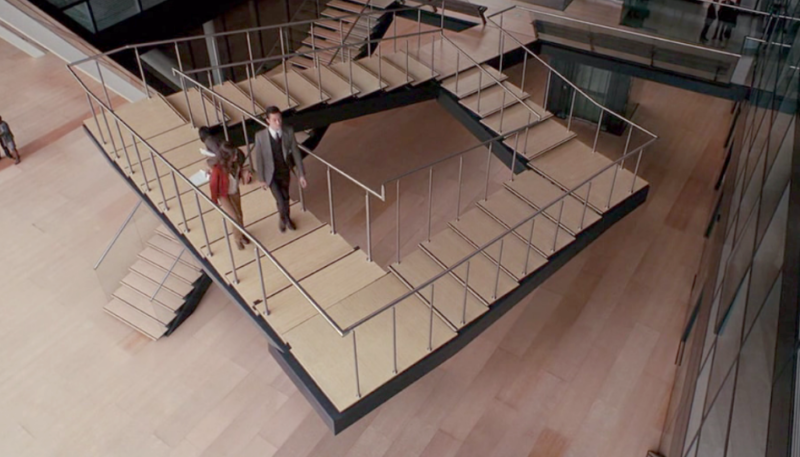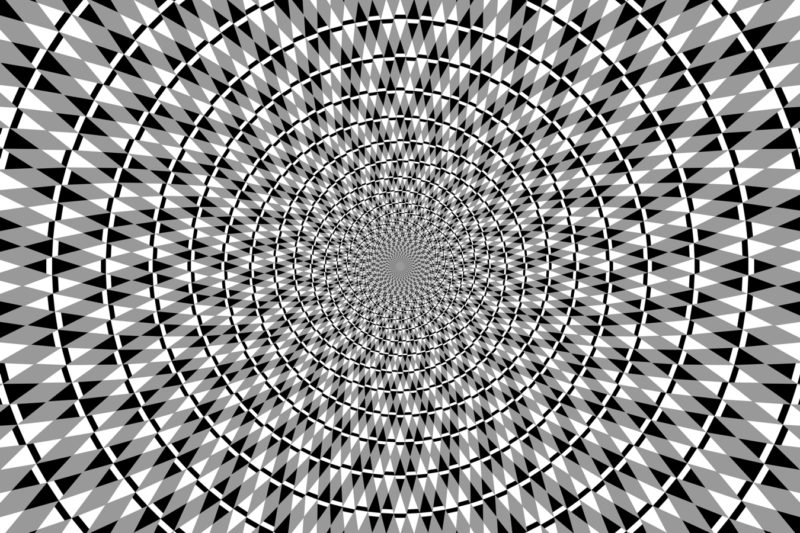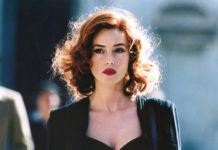The mysterious staircase of Penrose at first glance may seem like an ordinary architectural structure. But with a thorough acquaintance with the figure, it becomes clear that one cannot believe the eyes.
Material Content:
How does the Penrose staircase in reality
In 1958, a model of the impossible staircase, which was invented by Penrose's father and son, was published in the famous British journal of psychology. The unusual design is amazing. A person will constantly rise if he goes along it in one direction. At the same time, it will certainly get to the starting point when it overcomes four flights of stairs. Or can only endlessly move up. And if he chooses a different direction of movement, then he will have to go down all the time. And again he will be able to be at the starting point.
How the Penrose staircase is arranged, the picture shows perfectly. But if you turn on the logic, then the conclusion is clear. It comes to understanding that this design is not so simple, because in real life it is impossible to move in this way.
What is the secret of endless construction
On paper, you can depict an object that does not exist in the real world. It is enough to choose the right angle of observation of the object.
This is the secret of Penrose's drawing, which does not show a gap in the zone of the right corner. The figure will lose the appearance of a ladder along which you can endlessly climb or lower, you just need to look at it from a different point. Then visually the object will remain understandable and familiar, and its existence can be explained from the point of view of logic.
The human brain adapts the information received when it sees the image of the Penrose stairs.He does not notice a contradiction in the combination of structural elements, but forms an erroneous integral picture. Incorrect perception gives rise to an optical illusion. The main trick of the picture is to create a deceptive view of the subject.
The endless staircase of Penrose is one of the most popular utopian figures.
It is used everywhere:
- Psychologists and philosophers often turn to this image.
- Numerous professional illusionists and amateur artists create tricks with a ladder that has nonexistent abilities. Sometimes such shows take place even in real time.
- In painting, there is a direction of impossibilism, whose representatives draw similar objects on canvas.
- Doctors use the picture of stairs and other similar figures in their work to distract patients from unattractive medical manipulations.
Stairs without beginning and end - fiction or reality
In real life, you can’t create a Penrose creation. But a staircase without a beginning and an end exists. You can see her in the movie "The Beginning" directed by Christopher Nolan with Leonardo DiCaprio in the title role. The original building is located in German Munich, in one of the central office buildings of the city. In his creation, the idea of the infinity of Penrose steps was applied.
The spiral staircase with a height of about nine meters with connected edges was invented by the architect Olafur Eliasson.
They say that philosophers like to walk on stairs for a long time. And next to the stairs there is a warning so that more than ten people do not climb it at the same time. This is dangerous. Tourists from all over the world come to see the original design and wander along its endless steps. The staircase is open to visitors during the day from Monday to Friday.
Other imaginative shapes
A person often sees not at all what is actually depicted in the picture. And sometimes different people perceive the same images differently.
- A nonexistent cube can be seen in the picture of the Dutch artist Maurits Cornelis Escher. True, it is impossible to realize the figure depicted on the canvas in real life. Recognized graphics and mathematics have many striking images made in three-dimensional space. For example, Drawing Hands and Relativity.
- The impossible triangle was depicted by the Swedish artist Oscar Ruthersvard. The figure was printed on postage stamps of Sweden in 1980.
- The colorful spiral of James George Fraser is nothing but an illusion. In reality, these are images of large and small circles.
- In 2003, Japanese designer Nobuyuki Kayahara came up with the image of a girl who spins in one place. The picture develops the imagination. It is also used to find out the features of a person’s perception of reality. If the observer claims that the dancer moves clockwise, he is a logician. For people with developed intuition, the girl dances in the opposite direction. It is worth taking a closer look at the figure or its shadow. So you can see the movement in one direction and the other.
- The philosophical phrase that everything in life is relative is remarkably demonstrated by a picture of Herman Ebbinghaus. Two flowers have identical orange cores, but the petals are of different sizes. Visually it seems that the dimensions of the circles are different.
- Two figures from the illusion of the American psychologist Joseph Justrow are the same size. But it seems that one of them is much larger.
- The image of two running monsters was created by Roger Shepard. The figures are at different distances from the observer. Due to the peculiarities of perceiving perspectives, their sizes seem different. In reality, the monsters are identical.
- Another illustration of this author is an elephant that cannot exist in nature. It is difficult to understand how many paws an animal actually has.
- Ludimar German painted a black and white picture with interesting properties.On it at the intersection of white lines you can see gray spots. They appear and disappear, depending on the direction of the person’s gaze. They try to explain the Herman lattice phenomenon in different ways, but it is not possible to reliably determine the exact cause of this optical illusion.
- Japanese psychology professor Akioshi Kitaoka is known for his many static pictures. Observing them gives the impression that the colored patterns are moving.
- On the sculpture created by the artist Rafael Barrios, bright triangles painted with different shades of acrylic paint are located on flat sheets of steel. From a distance, the figures seem voluminous.
- Often you can see drawings that simultaneously depict several completely different objects. For example, the eyes of a large black cat upon closer inspection turn out to be a mouse head.
- A similar illusion belongs to the pen of Salvador Dali. The author painted both an elderly couple and two cheerful musicians at the same time.
A person has an amazing ability to see what is actually not there. And do not notice the obvious. Scientists are exploring the causes of optical illusions. The secret of Penrose's endless staircase has been revealed, but some perception errors have still not been able to explain from a scientific point of view.
















